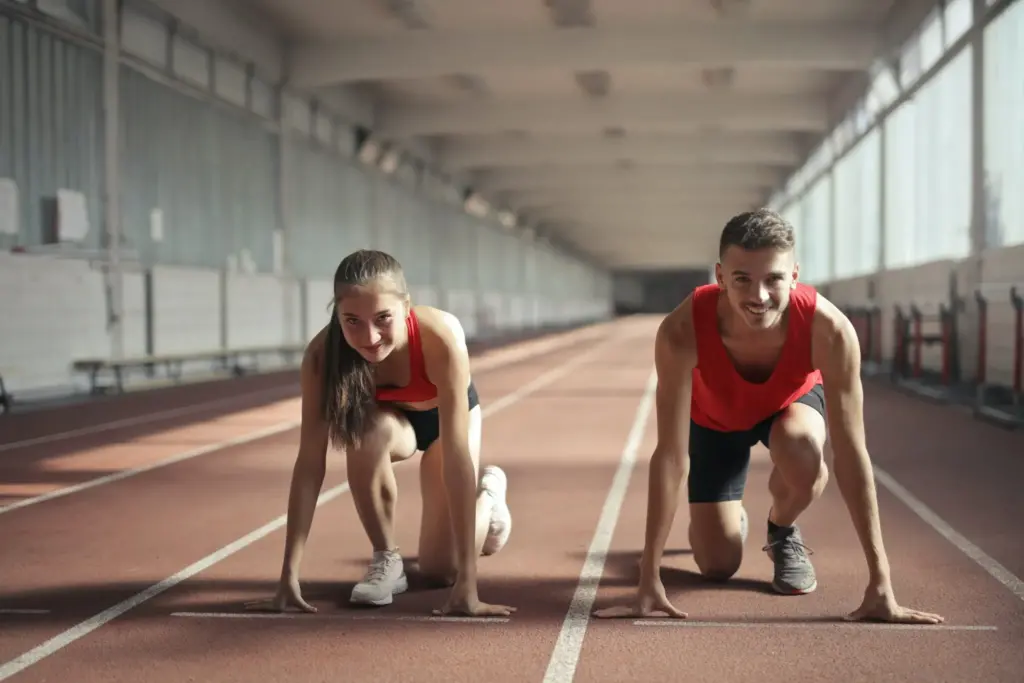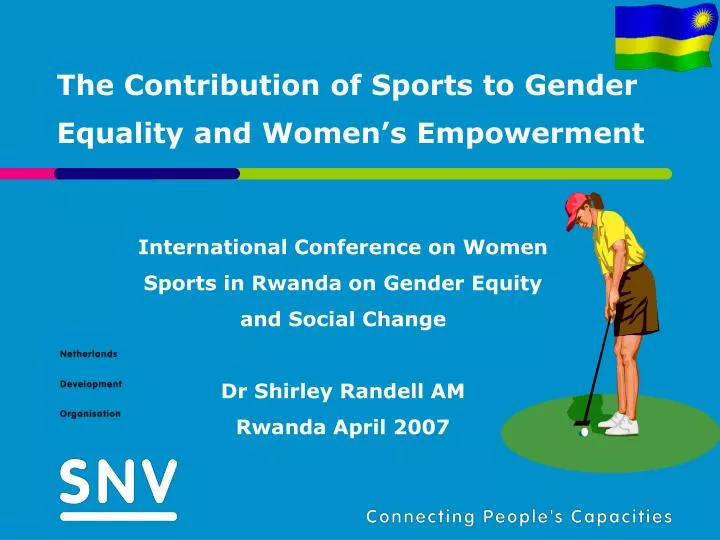Table of Contents
Introduction:
Gender equality in sports is an ongoing topic of discussion and advocacy, aiming to ensure equal opportunities, treatment, and representation for athletes of all genders. Here are some key points to consider regarding the challenges, progress, and the path ahead for achieving gender equality in sports:
Importance Of Gender Equality in Sports:
1. Stereotypes and Gender Bias: Sports have traditionally been associated with certain gender stereotypes, which can limit opportunities and perpetuate gender bias. Overcoming these stereotypes is crucial for promoting equal participation and recognition in sports.
2. Pay Gap and Resource Allocation: Disparities in pay and resource allocation between male and female athletes persist in many sports. Addressing these gaps is important for creating a level playing field and providing equal support for athletes of all genders.
3. Media Coverage and Representation: Female athletes often receive less media coverage and visibility compared to their male counterparts. Increasing representation and promoting equal coverage can help challenge gender norms and inspire the next generation of athletes.

Gender Equality in Sports (Image Source: worth.com)
4. Access to Opportunities: Providing equal access to training facilities, coaching, and development programs is essential for fostering talent and nurturing athletes of all genders. Breaking down barriers and creating inclusive pathways is vital for achieving gender equality in sports.
5. Leadership and Decision-Making: Having more women in leadership roles can drive positive change and address systemic challenges.
6. Cultural Attitudes: Shifting attitudes towards gender roles and expectations is crucial for achieving gender equality in sports.
7. Advocacy and Policy: Advocacy efforts and supportive policies play a significant role in advancing gender equality.
8. Empowering Female Athletes: Mentorship and development programs can empower female athletes for long-term success.
9. Engaging Men and Boys: Involving men and boys in discussions about gender equality promotes inclusivity and allyship.
10. Continued Progress: Ongoing collaboration and commitment from all stakeholders are needed for sustained progress in gender equality in sports.
By addressing these challenges and working together, we can create a more equal and diverse sporting environment.
Several Reasons For Gender Equality in Sports:
1. Fairness: It ensures that athletes are treated equally and have the same opportunities, regardless of their gender.
2. Inclusion: Gender equality allows individuals of all genders to participate in sports and feel valued and supported.
3. Breaking stereotypes: It challenges traditional beliefs about gender roles and shows that anyone can excel in sports.
4. Role models: Gender equality provides positive examples for young athletes and inspires them to pursue their passions.
5. Health and well-being: Sports contribute to physical and mental well-being, and gender equality ensures everyone has access to these benefits.
6. Economic impact: Gender equality in sports can lead to increased revenue and market growth.By expanding opportunities for female athletes, Encouragement methods in promoting gender equality in sports aim to create an inclusive and supportive environment for female athletes.

Several Reasons For Gender Equality in Sports (Image Source: change.org)
key Methods Of Gender Equality in Sports:
1. Role Models and Mentorship: Providing female athletes with visible role models and mentors who have excelled in their respective sports can inspire and motivate younger generations. Mentorship programs can offer guidance, support, and opportunities for skill development.
2. Grassroots Programs: Developing and promoting grassroots sports programs specifically targeted at girls and women can encourage their participation from an early age. These programs can provide equal access to training, coaching, and resources, fostering a love for sports and nurturing talent.
3. Education and Awareness: Raising awareness about gender equality in sports through educational initiatives can help challenge stereotypes, biases, and discriminatory practices. It involves educating athletes, coaches, parents, and the wider community about the importance of equal opportunities and fair treatment.
4. Accessible Facilities and Resources: Ensuring that sports facilities, equipment, and resources are easily accessible to female athletes is crucial. Providing equal access to quality training facilities, equipment, and support services eliminates barriers and promotes equal opportunities.
5. Policy Changes and Inclusion Initiatives: Implementing policies and initiatives that prioritize gender equality in sports is essential. This includes promoting equal representation, addressing pay disparities, enforcing anti-discrimination measures, and establishing gender-inclusive sports programs.
6. Community Support and Sponsorship: Encouraging community support and sponsorship for women’s sports can provide financial assistance, resources, and recognition.
key challenges include in Gender Equality in Sports:
1. Stereotypes and Societal Norms: Deep-rooted stereotypes and societal norms often perpetuate gender biases and limit opportunities for female athletes. Preconceived notions about women’s physical abilities, traditional gender roles, and societal expectations can hinder progress toward gender equality.

key challenges include in Gender Equality in Sports (Image Source: slideserve.com)
2. Unequal Funding and Resources: Female sports programs often receive less funding, sponsorship, and resources compared to their male counterparts. This disparity in financial support can lead to limited opportunities for training, development, and exposure for female athletes.
3. Media Coverage and Representation: Women’s sports receive significantly less media coverage and visibility compared to men’s sports. Limited media coverage not only affects the recognition and popularity of women’s sports but also impacts sponsorship opportunities and the growth of women’s leagues.
4. Pay Gap and Financial Disparities: Female athletes often face a significant pay gap compared to male athletes, both in terms of salaries and endorsement opportunities. This financial disparity can discourage female athletes from pursuing sports professionally and limit their financial independence.
5. Lack of Opportunities and Pathways: Limited opportunities for female athletes in terms of leagues, competitions, and pathways to professional sports can hinder their progression and development. Creating equal opportunities for women and girls in all levels of sports is crucial for nurturing talent and fostering career advancement.
6. Discrimination and Harassment: Female athletes may face discrimination, harassment, and gender-based violence within sports environments.
7. Cultural and Societal Barriers: Cultural norms, traditions, and societal expectations can pose barriers to female participation in sports, particularly in certain regions or communities. Challenging these barriers and promoting cultural shifts towards more inclusive attitudes is necessary for breaking down gender barriers in sports.
FAQs About Gender Equality in Sports:
How can individuals promote gender equality?
Challenge stereotypes, advocate for equal rights, support empowerment, and promote inclusivity.
What are some global initiatives promoting gender equality?
Examples include the United Nations’ Sustainable Development Goal 5, the HeForShe campaign, and various grassroots movements.
How can workplaces promote gender equality?
By implementing equal pay policies, offering family-friendly benefits, providing leadership opportunities, and fostering inclusive cultures.
What are barriers to gender equality?
Stereotypes, discrimination, unequal access, violence, and cultural norms.
How does gender equality in sports benefit society?
Gender equality in sports promotes social inclusion, provides positive role models for girls and women, breaks down gender barriers, contributes to overall gender equality efforts, and enhances the quality and competitiveness of sports.
How does gender inequality affect sports?
Sadly, women and girls also get fewer athletic opportunities, scholarships, and funds. Another area of inequality is the pay difference between male and female athletes. Men make more money than their female counterparts.
What are some interesting facts about gender inequality in sports?
Even before young women make it to college sports, many of them are deprived of athletic opportunities during high school. There are roughly 1.3 million fewer high school athletic opportunities for girls than for boys. This is probably related to girls being twice as likely as boys to drop out of sports by age 14.
Which sport has the most gender inequality?
Soccer, along with basketball and baseball are some of the main sports where the pay gap takes the greatest length.
What is the gender inequality in sports in India?
According to the latest research by BBC, the statistics shows that approximately 75% of the Indian population believe sports is significant in their day-to-day lives, however, only 36% of the population engage in any sort of sport or physical activity. Of these 42% of men and only 29% of women engage in sports.
What is the gender gap in sports participation?
Girls continue to be significantly less active than boys, with a gap of 213,000 (47% of boys are active compared to 43% of girls). Girls’ participation in team sports dropped by 7% to only 41%, vs boys 63%. Black British girls saw the biggest decrease in activity levels: 28% were active, down 8% from the previous year.
Conclusion:
In summary, gender equality in sports is crucial for creating a fair and inclusive sporting environment. By addressing challenges and implementing strategies to support female athletes, we can make progress in closing the gender gap. It requires the efforts of sports organizations, policymakers, sponsors, media, and society as a whole.

